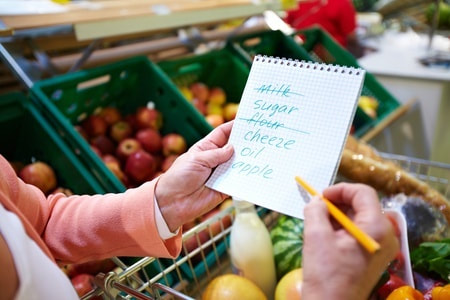|
Grandma never left home without hers. Even our mothers probably had one of some kind. And today's women are turning back to them in droves to save not only money and time but their sanity. Shopping lists, once considered old fashioned and a nuisance are making a comeback and in a big way.
It's a fact that most of us buy the same items each time we shop with the occasional new foodstuff or cleaning product to try. But how often have you gone to the supermarket, picked up what you thought you needed, only to discover when you arrived home that you had doubled up on some things and totally forgotten others? You will be wasting money and time if you shop like this. “I've always used a shopping list. It's usually scribbled on the back of an envelope or a small piece of paper but if I don't have it I can guarantee that I'll forget something vital or go way over my budget and these days especially I can't afford to do that,” says Catherine Allan, a young mother of four from Melbourne's outer east. “Knowing that I will get what we need and not have to go back to the shops for another week saves us hundreds of dollars a year. I can ignore the urge to impulse buy when I only have 45 minutes without the kids on a Saturday morning to do the shopping. Getting what's on that list is my focus, if it's not on the list I just don't have the time or the money to buy it.” As prices have gone up (inflation officially hit 4% last month) saving money, especially at the supermarket has become essential for families on a budget. Just as in Grandma's day people are feeling the pressure to spend less time shopping for groceries and save more time and money. It's easy to set up a perpetual shopping list so you never forget what you need. Having a perpetual list makes shopping a breeze. You simply tick the items you need and then cross them off as you put them in the trolley. Whether you use a notebook, the sample shopping list template or a spreadsheet on your computer or a shopping list program (and there are lots of free programs available) the steps are the same: 1. Rule up your master sheet with seven columns. They will be: item, brand, quantity, price last month, price this month, total. 2. Now list every item you buy, from peanut butter to toothpaste. If you want to be super organized, list the items in the order you find them in the supermarket. You’ll save time by not having to go back and forth and you will be able to mark off your list in order. Most supermarkets have a free store layout brochure available. If you can't find one in the aisles, ask at the service counter. 3. Once you've finished, run off some copies. Stick one to the front of the fridge or the pantry door. This will become your next shopping list. During the week as you run out of things or as you notice you’ll need an item, circle it on the list. Each shopping day, you just have to grab the list and hit the supermarket. Before you leave home, in the price column put the price for each item when you last bought it. You’ll get this information from your pricebook (a pricebook will save you an absolute fortune, if you don't have one seriously consider setting one up). When you are shopping just put the current price in the appropriate column and you have a record of how much each item has cost you. This helps you to keep track of how much items have gone up or down and will help you decide whether you need to reconsider the purchase. If you carry a small calculator and tally as you go, you’ll easily pick up checkout errors and notice immediately if you go over budget.
0 Comments
Your comment will be posted after it is approved.
Leave a Reply. |
Archives
April 2020
Categories
All
|

 RSS Feed
RSS Feed